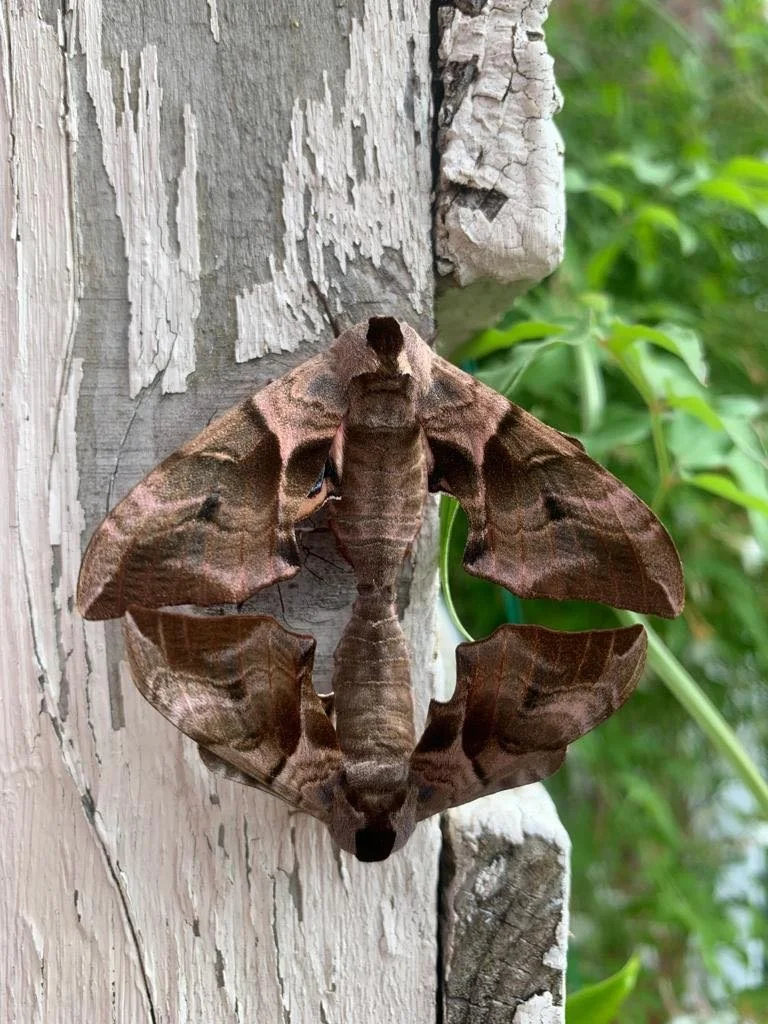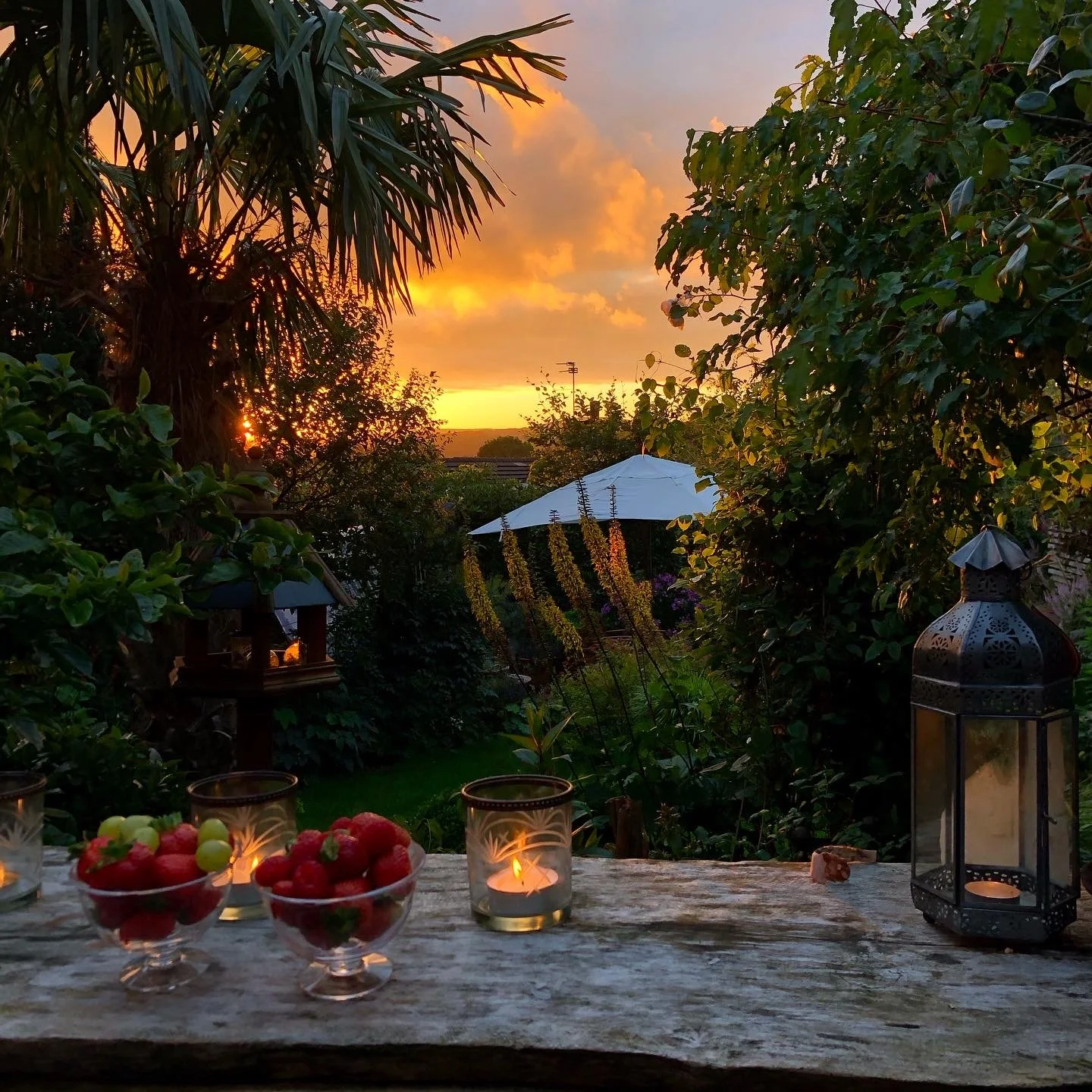I know it’s all been a bit quiet on here. Best intentions to keep up a blog has been slightly sidetracked with other projects…in particular working on an exciting collaborative show feature garden for the RHS at this July’s RHS Tatton Park Flower Show. I think that’s a reasonable excuse.
Eyed Hawk Moths | Photo courtesy of Mark Lightowler, Lancashire
The focus of this feature garden celebrates the role of the unsung pollinating hero, the humble moth. There have been a few new case studies [which I’ve already referenced in a previous blog so apologies for repeating]… one was carried out by the University of Central London, that suggests moths are far more complex pollinators than bees. Moths will visit the same plants as bees, butterflies and hoverflies but will also visit plants that the day-shifters miss. Reasearch from the University of Sussex also concludes that moths are much more efficient at pollinating plants than day-flying insects which puts them right up there on the vital pollinators list!
This collaborative feature garden will offer an unusual experience. A practical day time journey through a garden that highlights plants and habitats that will attract, feed, sustain and give shelter to our night time pollinators into an immersive night time journey through a digital environment. Designed by creative artist Georgia Tucker this half of the experience explores the lifecycle of moths and the threats they face from our modern world.
The garden is going to be an oasis of plants, each with a particular benefit to moths as well as other pollinators. I have selected some classic night-scented flowers as these are perfect for attracting moths, a sort of lure plant to entice them into your garden…and they also smell heavenly to us too. Nectar rich plants will also feature, great for attracting all types of pollinators and planted in bold groups to really show off their flower prowess. Nectar will provide food for the night flyers yet when creating a garden that offers a viable habitat to these creatures we need to embrace the larval stage of a moth’s development. The caterpillar. Many may now recoil at the thought of their blooms and foliage being decimated by these beasties. However, when you start to look into the types of plants that are the most attractive to moth caterpillars it becomes apparent that they are quite particular on what they feast on. Firstly it’s good to know that specific moths tend to prefer specific plant types for laying eggs. They also prefer native plants and are very much partial to wild weeds so the chances are that a lot of our prized garden blooms might not actually be high on the caterpillar’s preferred food agenda especially if you leave a place for the weeds to grow.
Sharing your garden space with weeds is not a new idea but one that is continuing to grow in importance. The Chelsea Flower Show had a number of gardens featuring weeds and for good reasons too. In a nutshell, we have lost 97% of our wild flower habitats and the nation’s fixation on weed killing anything that doesn’t look garden worthy is having a detrimental affect on all of our pollinators. We all have a responsibility to safeguard what we can and if we are lucky enough to have a garden, however small that might be, we need to start embracing some of this wild and learn to tolerate a range of insects appreciating our garden plants.
One area in the garden will show a species rich grass, allowed to grow long around dedicated planters for wilder weeds to romp. There will be a mini woodland, wildflower meadow, native hedges and a range of border planting styles to wander through.
I have also been keen to feature a selection of ornamental habitats as these are vital to give shelter and places for overwintering moth pupae and caterpillars. To survive they will tuck up inside plant debris in the hope of making it through to spring… yet many will end up in the council waste bins as we sweep our gardens bare from fallen leaves and plant material in the autumn. These ornamental habitats will show how this unwanted plant debris can be absorbed into our borders and other areas of our gardens in a way that is manageable and not unattractive.
The garden also looks at how we can light our spaces in a sensitive way so that we do not disturb the work of these night pollinators. Have a look at a previous blog entry that I did as a bit of research around the subject for more info here.
If you happen to be visiting the RHS Tatton Park Flower Show you must come and say hello! I will be there every day and would love to show you around. The event opens 19th to the 23rd July. For more info check out the RHS website.








